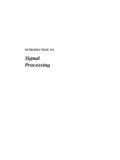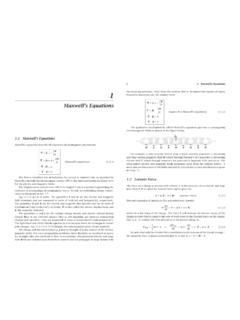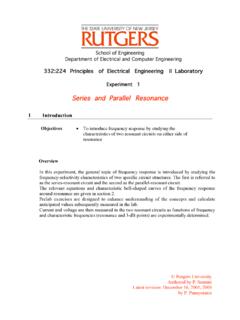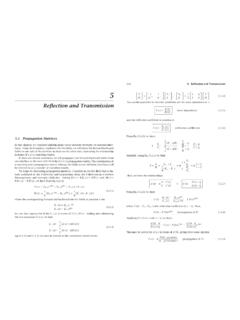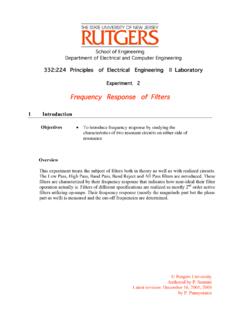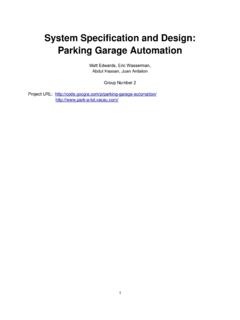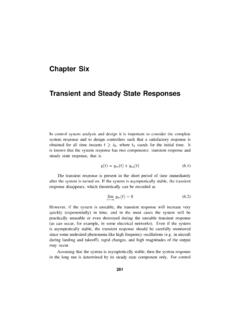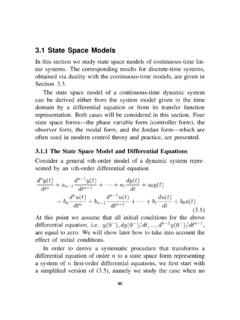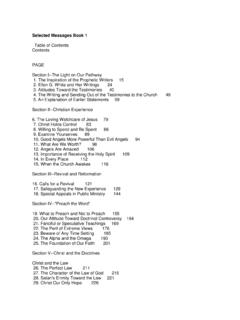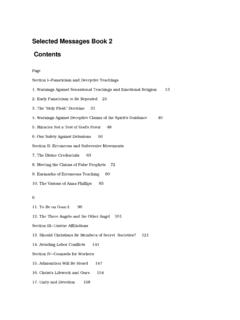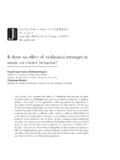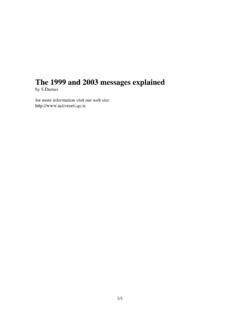Transcription of Wireless Networks - ece.rutgers.edu
1 Wireless Networks Local and Ad Hoc Networks Ivan Marsic Department of Electrical and Computer Engineering and the CAIP Center Rutgers University i Contents CHAPTER Summary and Bibliographical 6 CHAPTER 2 THE RADIO 1 Decibels and Signal 4 Channel 5 Transmission 5 Symbols To 6 6 Noise and Error 10 Continuous Noisy Channel 14 Radio Propagation: Multipath and 20 Large-Scale Path 21 Types of Wave 23 Doppler 25 Multipath or Small-Scale 26 Equalization, Coding, and 29 Adaptive 30 Channel Coding or Forward Error 30 Diversity Techniques for Fading 31 Packet Error 31 Summary and Bibliographical 32 33 CHAPTER 3 MULTIACCESS Ivan Marsic Rutgers University 36 MAC Protocol Performance 39 Propagation Time and Parameter.
2 40 Vulnerable 41 ALOHA 42 Throughput 43 Carrier Sensing 48 Throughput Analysis of Nonpersistent 51 54 54 Other MAC 56 Multiple-access 56 Physical Layer 57 Link Layer Interference: Hidden and Exposed 58 Summary and Bibliographical 61 61 CHAPTER 4 IEEE Wireless 68 Architecture and 68 72 Medium Access 72 Interframe 73 Virtual Carrier Sensing and Network Allocation 75 ARQ and Atomic 75 Backoff Procedure with the 78 Hidden and Exposed 79 Frame 81 Physical Layer and Rate 82 Physical 82 Transmission Rate 83 Power-saving 85 Effect on 87 Performance 88 Channel Event 89 Throughput and Delay 92 Chapter 1 Introduction to Computer Networks IEEE Family of 94 Summary and Bibliographical 98
3 98 CHAPTER 5 AD HOC 103 Routing 104 Dynamic Source Routing (DSR) 105 Ad Hoc On-Demand Distance-Vector (AODV) 107 End-to-End Path 108 108 108 Capacity of Mobile Ad Hoc 108 Measured Scaling 109 MAC User 109 Summary and Bibliographical 110 110 CHAPTER 6 TECHNOLOGIES AND FUTURE 111 Heterogeneous Wireless 112 3G Cellular 113 Hybrid 114 Sensor 115 Data Gathering and 116 Commercial Sensor 116 Mobile Ad-hoc 117 Why MANETs?.. 117 Community 119 Cognitive (Software) 121 Summary and Bibliographical 122 Ivan Marsic Rutgers University ivSOLUTIONS TO SELECTED ACRONYMS AND 1 Contents x x x x x x x x Summary and Bibliographical Notes Chapter 1 Introduction In this text I review basic results about Wireless communication Networks .
4 Communication may be defined as the process of successfully transferring information between two or more parties. My emphasis is on computation rather than physics of the processes, while keeping in mind that understanding the physics is necessary to design the computation. The recurring theme in this chapter is the capacity and its statistical properties for a communication channel. Capacity is modeled differently at different abstraction levels, but the key issue remains the same: how to increase the amount of information that can be transmitted over a channel in the presence of channel impairments.
5 A complement of capacity is delay, and although it crops up sporadically, the treatment of delays is deferred to the next chapter. The main difference between wired and Wireless Networks is that there are no wires (the air link) and mobility is thus conferred by the lack of a wired tether. This leads to both the tremendous benefits of Wireless Networks and the perceived drawbacks to them. Some of the key technical challenges in Wireless communications come from (i) the hostile Wireless propagation medium and (ii) user mobility. Most of the issues covered in this chapter arise in any data network, wired and Wireless likewise.
6 What makes the Wireless different is the degree of importance inherent to the problems that often appear in both types of Networks . Some examples are as follows. Errors due to channel noise occur both in wired and Wireless Networks , but in the former they play only a minor role. Conversely, in Wireless Networks , channel errors are a major concern. Moreover, due to dynamic changes in the transmission medium and user mobility, the error probability changes dynamically over a wide range. Both wired and Wireless Networks employ broadcast where multiple stations use the same medium for communication.
7 However, in the Wireless case listening while speaking is Ivan Marsic Rutgers University 2complicated, so coordinating the medium access or MAC (Medium Access Control) is much more complicated. Both types of Networks employ routing to bring a packet to the destination. However, Wireless link is a relative (or soft ) concept. Dynamic changes in the transmission medium and user mobility often cause severance or emergence of a link and the associated changes in the network topology, , network graph connectivity. The point of belonging to a network is in having relationship with other entities in the network.
8 While a mobile device is moving, the related network entities may be moving in a different direction or not moving at all. This change of the network landscape an uncommon phenomenon in the wired world presents important challenges from the network management perspective if the network is to provide an undisrupted service to the roaming user. Energy expenditure is important in both types of Networks (recall screen savers and coolers for wired computers), but battery energy plays a key role in Wireless communication. Transmission power also determines the spatial volume within which a given radio transmission interferes with other transmissions.
9 Radio resource management refers to the control signaling and associated protocols that negotiate the optimal usage of network radio resources (transmission signal strength and available radio channels) for communication. Application drivers are different ( , multimedia, sensors, military, etc.) As a result, it is very hard to disentangle the concerns and responsibilities of different network layers, , MAC, routing, and resource allocation, in Wireless Networks . Protocol Layering While information is represented and transmitted in the form of signal waveforms, communication between the sender and the receiver is usually viewed as taking place between different layers of abstraction, which are codified as ISO OSI reference architecture, see Figure 1-1.
10 The key design principle is such that a protocol at layer i does not know about the protocols at layers i 1 and i+1. The aspects of abstraction include the type of service offered and the type of representation of messages exchanged between the communicating entities. The services offered by a higher abstraction layer are composed of the services offered by the lower abstraction layers. The type of information grows in abstraction from physical signals and streams of symbols to software objects. In this chapter I consider the bottom three layers: physical, link, and networking.
